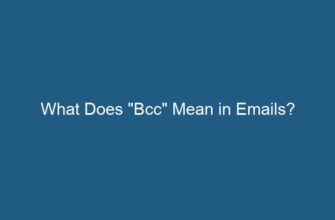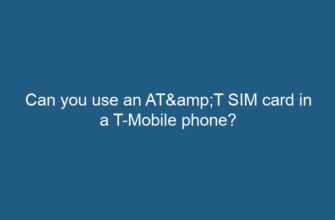Welcome messages on websites are essential for creating a positive user experience and setting the tone for the rest of the site. They provide an opportunity to greet visitors, introduce your brand, and guide them through your website’s offerings. In this article, we will explore some great examples of welcome messages that can inspire you to create an engaging and effective introduction for your own website.
1. Personalized Greetings
One effective way to make visitors feel welcome is by addressing them personally. Use cookies or login information to greet returning users by their names. For example, “Welcome back, [Name]! We’re glad to see you again.” This personal touch enhances the user experience and creates a sense of connection.
2. Attention-Grabbing Headlines
A catchy headline can instantly captivate visitors and make them want to explore further. It should be concise, compelling, and aligned with your brand’s tone. For instance, “Discover the Magic of [Brand Name]: Your Journey Starts Here!” This type of headline can pique curiosity and encourage users to delve deeper into your website.
3. Clear Value Proposition
Clearly communicate the unique value your website offers to visitors. Explain why they should choose your brand over competitors and how your offerings can solve their problems. For example, “Unlock Your Creative Potential with Our Innovative Tools and Resources.” This establishes your brand’s credibility and relevance right from the start.
4. Introduce Your Brand
Take the opportunity to introduce your brand’s identity and values. Use your welcome message to convey the essence of your brand and what sets it apart. Share your mission, vision, and the story behind your company. This helps users connect with your brand on a deeper level and builds trust. For instance, “At [Brand Name], we believe in empowering individuals to achieve their goals through our sustainable and ethically sourced products.”
5. Navigation Assistance
A welcome message can also serve as a guide to help visitors navigate your website. Highlight key sections or features and provide links to popular pages. This helps users find what they’re looking for quickly and easily. For example, “Explore Our Products, Learn from Our Blog, or Contact Us for Personalized Assistance.”
6. Call-to-Action (CTA)
Include a clear and enticing call-to-action in your welcome message to encourage visitors to take the desired action. Whether it’s signing up for a newsletter, making a purchase, or exploring specific content, a well-placed CTA can increase user engagement. For example, “Join Our Community and Get Exclusive Access to Discounts!”
7. Social Proof
Include testimonials, reviews, or statistics that demonstrate the positive experiences of previous customers or users. This helps build trust and credibility. For instance, “Over 10,000 satisfied customers have transformed their lives with our products.”
8. Interactive Elements
Engage visitors by incorporating interactive elements into your welcome message. This could be a quiz, a poll, or a mini-game that relates to your brand or industry. Interactive content encourages users to stay on your website longer and increases their likelihood of conversion. For example, “Take our quick quiz to find out your perfect skincare routine!”
9. Visual Appeal
Utilize visually appealing elements in your welcome message to capture visitors’ attention. This could include high-quality images, videos, or animations that showcase your products or services. Visuals can convey your brand’s personality and create a memorable first impression. For instance, a fitness brand could include a video montage of people working out with an energetic soundtrack.
10. Mobile Optimization
Ensure your welcome message is optimized for mobile devices, as an increasing number of users access websites through their smartphones or tablets. Make sure the text is readable, the images are appropriately sized, and any interactive elements are touch-friendly. A seamless mobile experience enhances user satisfaction and encourages further exploration.
11. Continuous Improvement
Regularly analyze the performance of your welcome message through user feedback, analytics, and A/B testing. Continuously refine and optimize its content, design, and placement to maximize its effectiveness in welcoming and engaging visitors.
Frequently Asked Questions (FAQs)
-
Q: How long should a welcome message be?
A: A welcome message should be concise and to the point. Ideally, it should be no longer than a few sentences to capture visitors’ attention without overwhelming them.
-
Q: Can I change my welcome message regularly?
A: Yes, updating your welcome message periodically can keep your website fresh and show returning visitors that you’re actively engaged with them.
-
Q: Should I include humor in my welcome message?
A: Humor can be effective in creating a positive first impression, but it should align with your brand’s tone and be appropriate for your target audience.
-
Q: How can I make my welcome message more personal?
A: Using cookies or login information to address visitors by their names can add a personal touch to your welcome message. Additionally, incorporating personalized recommendations based on their previous interactions can enhance the personalization.
-
Q: Is it necessary to include a CTA in my welcome message?
A: While not mandatory, a well-placed and compelling call-to-action can increase user engagement and guide visitors towards desired actions.
-
Q: Can I include multiple CTAs in my welcome message?
A: It’s generally recommended to focus on one primary call-to-action in your welcome message to avoid overwhelming visitors. However, you can include secondary CTAs in other sections of your website.
-
Q: How can I make my welcome message stand out?
A: Incorporating unique visual elements, interactive content, or personalization can help your welcome message leave a lasting impression on visitors.
-
Q: Should I include my contact information in the welcome message?
A: Including contact information can provide visitors with immediate access to your support or sales team, enhancing their overall experience. However, ensure it doesn’t clutter the message.
-
Q: Should I translate my welcome message for international visitors?
A: If you have a global audience, translating your welcome message into different languages can create a more inclusive and welcoming experience for international visitors.
-
Q: Can I use emojis in my welcome message?
A: Emojis can add a touch of personality and playfulness to your welcome message. However, use them sparingly and ensure they are appropriate for your brand and target audience.
Conclusion
A well-crafted welcome message sets the stage for a positive user experience on your website. By personalizing greetings, highlighting your brand’s value, offering navigation assistance, and incorporating interactive elements, you can create a warm and engaging introduction for your visitors. Regularly evaluate and refine your welcome message to ensure it continues to resonate with your target audience and effectively represents your brand.










